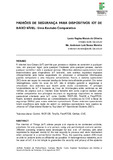| dc.relation | ADD. Assert for addition overflow on queue creation (#225). Github.com, 2020.
Homepage. Disponível em:
<https://github.com/FreeRTOS/FreeRTOS-Kernel/commit/47338393f1f79558f614421
3409f09f81d7c4837> Acesso em: 5 de maio de 2021.
ALABA, Fadele Ayotunde; OTHMAN, Mazliza; HASHEM, Ibrahim Abaker Targio;
ALOTAIBI, Faiz. Internet of Things security: a survey. Journal Of Network And
Computer Applications, [S.L.], v. 88, p. 10-28, jun. 2017. Elsevier BV. Disponível em:
<http://dx.doi.org/10.1016/j.jnca.2017.04.002>. Acesso em: 10 de maio de 2021.
AL-FUQAHA, Ala; GUIZANI, Mohsen; MOHAMMADI, Mehdi; ALEDHARI,
Mohammed; AYYASH, Moussa. Internet of Things: a survey on enabling
technologies, protocols, and applications. Ieee Communications Surveys &
Tutorials, [S.L.], v. 17, n. 4, p. 2347-2376, 2015. Institute of Electrical and Electronics
Engineers (IEEE). Disponível em: <http://dx.doi.org/10.1109/comst.2015.2444095>.
Acesso em: 6 de junho de 2021.
ATZORI, Luigi; IERA, Antonio; MORABITO, Giacomo. The Internet of Things: a
survey. Computer Networks, [S.L.], v. 54, n. 15, p. 2787-2805, out. 2010. Elsevier
BV. Disponível em: <http://dx.doi.org/10.1016/j.comnet.2010.05.010>. Acesso em: 5
de abril de 2021.
BACCELLI Emmanuel, HAHM Oliver, GÜNES Mesut, WÄHLISCH Matthias,
SCHMIDT Thomas. RIOT OS: Towards an OS for the Internet of Things. In: The
IEEE International Conference on Computer Communications (INFOCOM), 32.,
2013, Turin. Anais. Italy: IEEE. Disponível em: <https://hal.inria.fr/hal-00945122>.
Acesso em: 30 de junho de 2021.
BELLEZA, Rafael Raymundo; PIGNATON, Edison. Performance study of real‐time
operating systems for internet of things devices. Iet Software, [S.L.], v. 12, n. 3,
p. 176-182, jun. 2018. Institution of Engineering and Technology (IET). Disponível
em: <http://dx.doi.org/10.1049/iet-sen.2017.0048>. Acesso em: 08 de junho de 2021.
BERTOLOTTI, Ivan Cibrario; KASHANI, Gilda Ghafour Zadeh. On the performance
of open-source RTOS synchronization primitives. In: 2015 Ieee international
forum on research and technologies for society and industry leveraging a better
tomorrow (RTSI), 1., 2015, Turin. Anais. Italy: IEEE. p. 398-402.
BROWSING; security vulnerabilities in the GitHub Advisory Database. Github,
2021. Homepage. Disponível em:
<https://docs.github.com/en/code-security/supply-chain-security/managing-vulnerabili
ties-in-your-projects-dependencies/browsing-security-vulnerabilities-in-the-github-adv
isory-database>. Acesso em: 13 de junho de 2021.
CVE. common vulnerabilities and exposures, the de facto international
standard for vulnerability identification and naming. Homepage. cve.mitre.org,
2021. Disponível em: <https://cve.mitre.org/index.html>. Acesso em: 28 de junho de
2021.
CXSECURITY. Vulnerability cve-2021-31571. Cxsecurity, 2021. Homepage.
Disponível em: <https://cxsecurity.com/cveshow/CVE-2021-31571/>. Acesso em: 26
de junho de 2021.
DENNEDY, Michelle Finneran; FOX, Jonathan; FINNERAN, Thomas R. Technology
Evolution, People, and Privacy. The Privacy Engineer’s Manifesto, [S.L.], v. 1, n. 1,
p. 3-24, 12 fev. 2014. Disponível em:
<http://dx.doi.org/10.1007/978-1-4302-6356-2_1>. Acesso em: 15 de maio de 2021.
GANTER, Bernhard; WILLE, Rudolf. Formal Concept Analysis: mathematical
foundations. Berlin: Springer Book Archive, 1999. 284 p.
HICHAM, Aberbach; SABRI, Abdelouahed; JEGHAL, Adil; TAIRI, Hamid. A
Comparative Study between Operating Systems (Os) for the Internet of Things
(IoT). Transactions On Machine Learning And Artificial Intelligence, [S.L.], v. 5, n. 4,
p. 280-290, agust 31, 2017. Scholar Publishing. Disponível em:
http://dx.doi.org/10.14738/tmlai.54.3192. Acesso em: 06 de junho de 2021.
IMPROVE. Heap2 bounds checking (#224). Github.com, 2020. Homepage.
Disponível em:
<https://github.com/FreeRTOS/FreeRTOS-Kernel/commit/c7a9a01c94987082b223d3
e59969ede64363da63>. Acesso em: 07 de maio de 2021.
KOVACS, Eduard; Freertos vulnerabilities: Expose Many Systems to Attacks.
Securityweek, 2018. Homepage. Disponível em:
<https://www.securityweek.com/freertos-vulnerabilities-expose-many-systems-attack
s>. Acesso em: 02 de julho de 2021.
MAPPED. vulnerability in RIOT-OS. GitHub, 2020. Homepage. Disponível em:
<https://github.com/FreeRTOS/FreeRTOS/commit/b877e4ec478de2c24d07ab46241
070d7c66f375c?branch=b877e4ec478de2c24d07ab46241070d7c66f375c>. Acesso
em: 25 de maio de 2021
MATHEU-GARCÍA, Sara N.; HERNÁNDEZ-RAMOS, José L.; SKARMETA, Antonio
F.; BALDINI, Gianmarco. Risk-based automated assessment and testing for the
cybersecurity certification and labelling of IoT devices. Computer Standards &
Interfaces, [S.L.], v. 62, p. 64-83, fev. 2019. Elsevier BV. Disponível em:
<http://dx.doi.org/10.1016/j.csi.2018.08.003>. Acesso em: 21 de maio de 2021.
NIST. National vulnerability database. Nvd.Nist.gov. 2021. Homepage. Disponível
em: <https://nvd.nist.gov/vuln/detail/CVE-2021-31571>. Acesso em: 08 de junho de
2021.
OUADJAOUT, Abdelraouf; MINÉ, Antoine; LASLA, Noureddine; BADACHE, Nadjib.
Static analysis by abstract interpretation of functional properties of device
drivers in TinyOS. Journal Of Systems And Software, [S.L.], v. 120, p. 114-132,
October, 2016. Elsevier BV. Disponível em:
<http://dx.doi.org/10.1016/j.jss.2016.07.030>. Acesso em: 06 de junho de 2021
RENAUX, Douglas P.B.; POTTKER, Fabiana; SOARES, Claudio E.; VALERIO,
Cristiano C. A State-Based Function-Queue Software Architecture for Electric
Motor Control. In: Ieee international symposium on real-time distributed computing
(ISORC), 19., 2016, York: IEEE. p. 229-236.
RIOT-OS. Project Team. Riot-os.org, 2021. Homepage. Disponível em:
<https://www.riot-os.org>. Access on: 21 de junho de 2021.
TINYSEC. Tinyos.stanford.edu. 2009. Homepage. Disponível em:
<http://tinyos.stanford.edu/tinyos-wiki/index.php/TinySec>. Acesso em: 25 de junho
de 2021.
VULMON. Vulmon Search is a vulnerability search engine. cve-2021-31572.
Vulmon, 2021. Homepage. Disponível em:
<https://vulmon.com/vulnerabilitydetails?qid=CVE-2021-31572>. Acesso em: 08 de
junho de 2021.
WOLFSSL. State of the art networking security for embedded systems.
Openrtos, 2016. Homepage. Disponível
em:<http://www.openrtos.org/FreeRTOS-Plus/WolfSSL/WolfSSL.shtml>. Acesso em:
29 de junho de 2021.
YOUSEFNEZHAD, Narges; MALHI, Avleen; FRÄMLING, Kary. Security in product
lifecycle of IoT devices: a survey. Journal Of Network And Computer Applications,
Amsterdã, v. 171, n. 102779, 01 december 2020. Elsevier BV. Disponível em:
<http://dx.doi.org/10.1016/j.jnca.2020.102779>. Acesso em: 22 de junho de 2021. | pt_BR |


